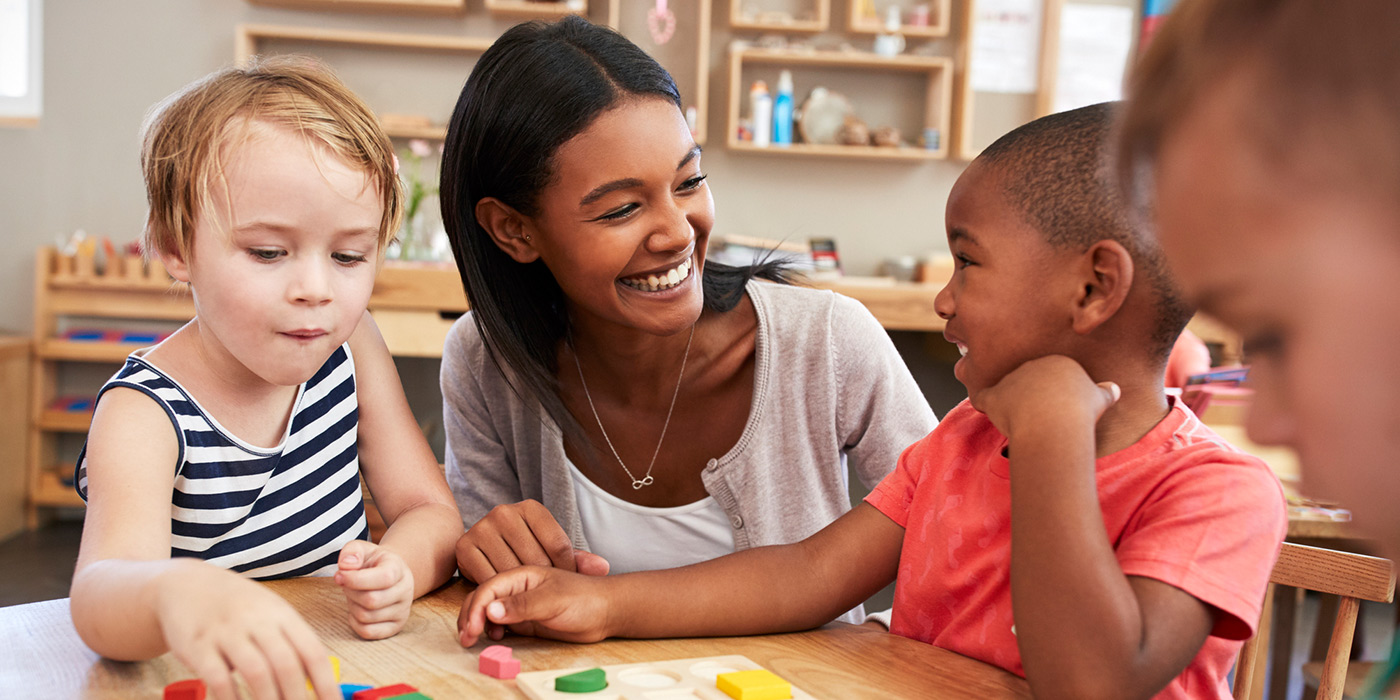As a new kindergarten class enters the school year, you’ll find that many children will be excited to meet new friends, learn more skills, and get into a routine. But it’s also completely normal for some of your students to find it difficult to adjust.
With more structured schedules, longer hours in school, and higher academic expectations, many students may find themselves overwhelmed and upset — and oftentimes, end up in tears.
However, there are several ways to soothe their worries, cheer them up, and even get them excited about all of the wonderful new things they’ll experience in kindergarten.
Here, experienced kindergarten teachers Lisa Esquibel and Katie Zuehlke share strategies for comforting new students and helping them adjust to their new routines.
1. Introduce Yourself Early and Involve Families
This is a wonderful way to get to know your students before anyone even enters the classroom.
“I always send a postcard to each student the week prior to school starting,” says Esquibel. “I find many students carry it with them in their backpacks the first week or so. The parents are always appreciative of the effort made to connect before school starts.”
Another fun option is to send a getting-to-know-you project home for kids and their parents to complete before entering the classroom.
“I involve the students and their families in a project they take home during back-to-school night,” says Esquibel. “Students complete an All About Me poster with the help of their family and bring it back the first week of school. Students have the opportunity to share their poster, allowing classmates to get to know each other early in the year.”
2. Use Distractions
As you meet your students and get to know them, find out what makes them happy. Do they like to play with a favorite toy? Share a fun book or coloring?
You can also introduce them to new activities they haven’t tried at home yet.
“Distraction is my number one tool for sad kindergarteners!” says Zuehlke. “I find a fun activity that the student does not have at home and get them engaged.”
Use these to your advantage in helping them feel more comfortable in their new setting. This way, they’ll know that the classroom is a safe place to be themselves and to have fun.
3. Share Relatable Read-Alouds Together
Relatable books can be very comforting for children who are feeling homesick and are getting to know the ins and outs of a new learning environment. Take this opportunity to share some of the great read-aloud titles in your classroom library to make them feel less alone in this experience.
“We always make a simple art project the first morning that the students can take home with them to their family at the end of the first day,” says Esquibel. “The craft usually goes along with the story The Kissing Hand. This helps them get through their first long day because they are excited to take their project home with them to share with their family.”
The Night Before Kindergarten is another great book to share. “Students can relate to the emotions the characters are feeling in this story as well as those the parents might be feeling,” says Esquibel. “This story helps them realize it is OK to feel nervous and that the nerves quickly fade away.”
First Day Jitters also resonates with many kindergarteners. “Students are always surprised to find out that teachers can be just as nervous as the students are on the first day,” says Esquibel. “The end of this story always gets a lot of giggles and surprised faces.”
4. Allocate Classroom Jobs
Getting your new students involved in running the classroom smoothly makes them feel seen, important, and helpful. It also helps them ease into their new routine and makes them feel like an integral part of the classroom, which they are!
“I find a special teacher job like putting papers in mailboxes or sorting glue sticks that will keep the student’s mind off the sadness,” says Zuehlke. “Kids love to help!”
Give students easy classroom jobs like collecting papers, making sure library books are back on the shelves, and organizing art supplies. These tasks not only help you out, but give students a sense of community as well.
5. Be Consistent
Consistency is key to establishing a comfortable, predictable routine for new students.
“Establish simple rules and be consistent with rules and expectations from the start of the first day,” says Esquibel. “Young students like consistency and this helps them manage their emotions and nerves. Use a visual schedule so students know how far they are into their day.”
6. Provide an Outlet
Providing an outlet for expressing their emotions is also incredibly important and helpful for children. Knowing that your classroom is a safe place for them to express themselves when they need to goes a long way in making them feel better.
“Have a ‘Calm Down Area’ available to students who may need time away from peers,” says Zuehlke. “Additionally, make many opportunities for free play during those first weeks of school. For five- and six-year-olds, work is play! They will feel most comfortable in the classroom and enjoy school when they are able to engage in developmentally appropriate play several times throughout the day.”
Shop the best read-alouds about kindergarten below! You can find all books and activities at The Teacher Store.
